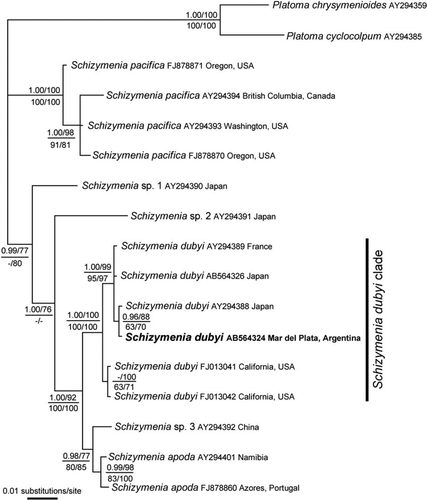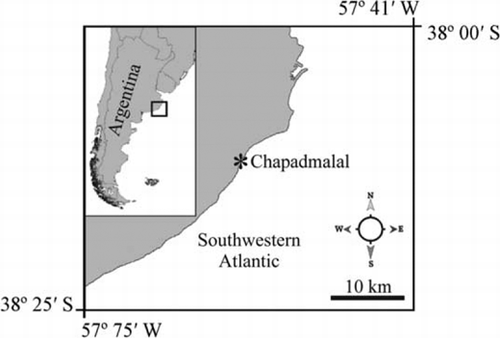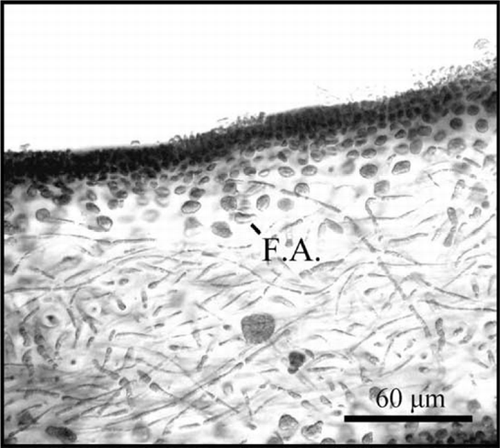Figures & data
Figure 2 Schizymenia dubyi individuals on the intertidal rocky shore in Chapadmalal region (Mar del Plata, Argentina).
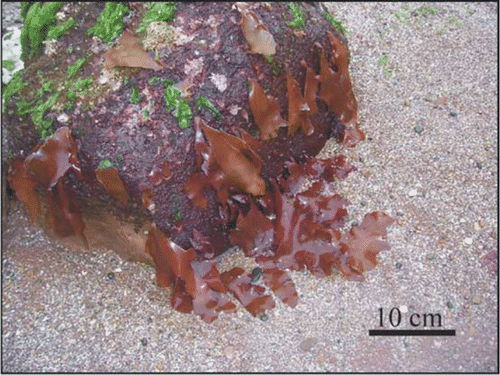
Figure 3 Schizymenia dubyi cross-sections of filamentous medulla showing glandular cells on the cortex (G.C.), periclinals and anticlinal medular filaments (M.F.).

Figure 5 Schizymenia dubyi cross-sections of cystocarps showing specialised opening or carpostome (C.) and mass of carpospores (C.M.).
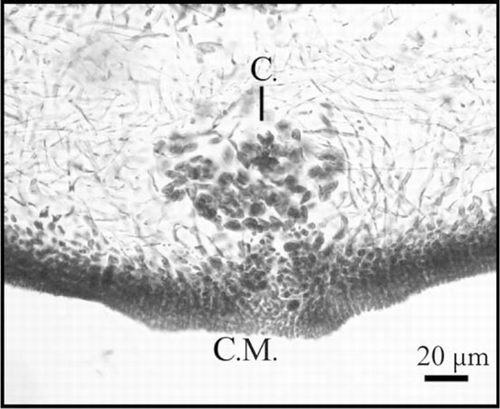
Figure 6 Schizymenia dubyi cross-sections of a tetraesporophyte showing hypothallus (H), epithallus (E) and perithallus (P).
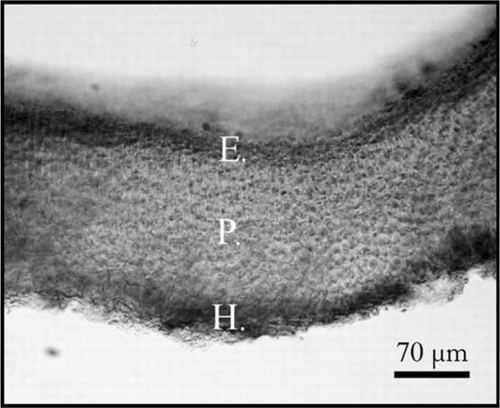
Figure 7 Bayesian tree based on rbcL gene sequences. The corresponding posterior probabilities (>0.94) are shown (top left). Numbers shown at the top right indicate bootstrap values (>50%) from maximum likelihood. Numbers shown at the bottom indicate bootstrap values (>50%) from maximum parsimony (left) and neighbour joining (right). In bold, samples of the exotic population detected in Argentina.
